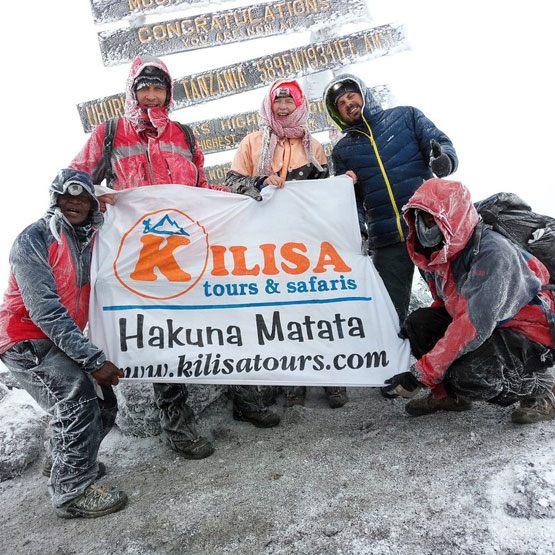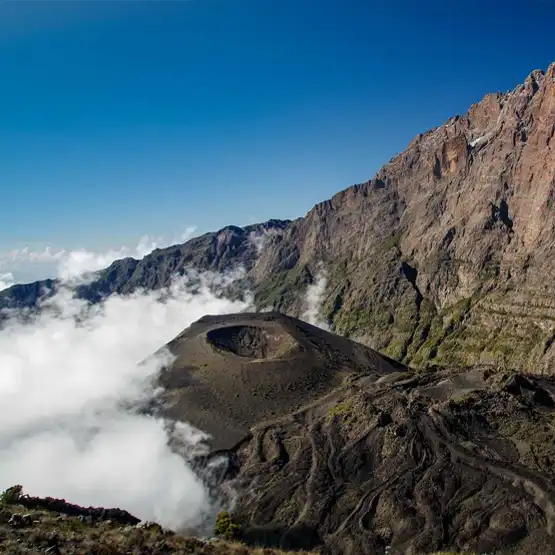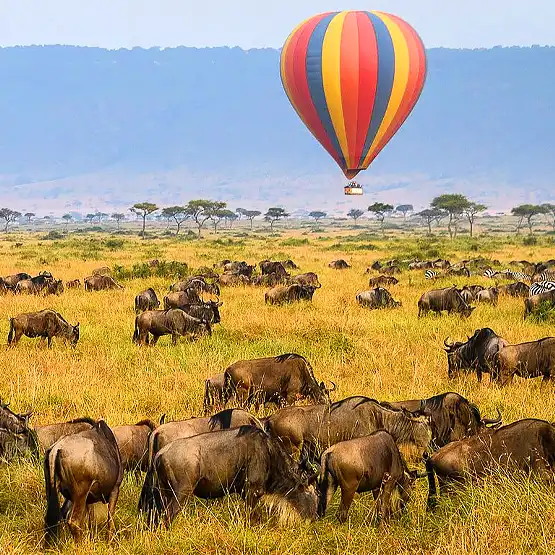Ever wondered what it takes to conquer Africa’s highest peak? Climbing Kilimanjaro is not just a test of physical endurance but also demands a financial investment. Costs can range significantly, creating a crucial consideration for adventurers with varying budgets.
The cost to climb Kilimanjaro generally falls between $1,500 and $4,000. This price difference largely depends on factors like the length of the climb, the route chosen, and the level of comfort desired. Historical data shows that the more popular routes like Marangu and Machame tend to be costlier due to their high demand and better amenities.

How Much Does It Cost to Climb Kilimanjaro
Understanding the cost to climb Kilimanjaro is essential for planning this epic adventure. The price varies widely, typically ranging from $1,500 to $4,000. Factors such as the route you choose and the duration of the trek play significant roles. According to this post, longer treks with popular routes tend to be more expensive due to their higher demand.
Several elements contribute to the overall cost of climbing Kilimanjaro. These include permits, guiding services, and porters. Additionally, the choice between budget and luxury operators affects the price. The Kilisa Tours offer various packages to cater to different budgets. Here is the article about choosing the right package for your adventure.
Accommodation before and after the climb can also impact the total cost. Many climbers prefer staying in local hotels or lodges. Meals and transportation to the base also add up. It’s crucial to consider these additional expenses when budgeting for your trip. The Kilisa Tours plan typically includes these peripheral costs.
Saving on costs while ensuring a safe and enjoyable climb is possible with careful planning. Group climbs may offer discounts. Booking during off-peak seasons can reduce costs. Equipments like clothing and gear can be rented instead of purchased. According to the article, the right strategy and preparation are key to managing Kilimanjaro climbing expenses.
Breaking Down the Costs: From Permits to Porters
To climb Kilimanjaro, you’ll first need to secure permits. These usually cost around $800. Permits are essential as they grant access to the national park. They cover conservation fees and support the local economy. Guides and porters play key roles in a successful climb.
Hiring guides and porters is necessary for safety and support. Guides typically charge $20 to $30 per day. Porters, who carry gear and supplies, usually cost $15 per day. These costs can add up, making them a significant part of your budget. According to this post, understanding their duties helps you appreciate their worth.
Food and accommodation during the climb also impact the budget. Meals are often included in the package provided by tour operators. Simple yet nutritious food is essential for energy. Accommodation ranges from tents to huts, depending on the route. The changing needs of climbers influence these costs.
Transportation to and from the mountain is another expense. Many climbers arrive in Tanzania by plane, which adds to travel costs. Local transport to the park entrance can vary in price. Ensuring reliable transport is crucial for a smooth trip. With careful planning, these costs can be optimized without compromising the experience.
Factors Influencing the Cost of Climbing Kilimanjaro
Several factors influence the cost of climbing Kilimanjaro. One primary factor is the route you select. Different routes have varying durations and difficulty levels. The longer and more challenging routes generally cost more. This is due to higher demand and additional resources needed.
The time of year you choose to climb also affects the cost. Peak seasons, like June to September, see higher prices. This is because more climbers opt for these months. Conversely, off-peak seasons might offer discounts. However, weather conditions can be less favorable.
The type of tour operator you choose impacts your budget as well. There are budget operators and luxury operators. Budget operators provide basic services for a lower cost. Luxury operators offer premium services and amenities. Each type caters to different preferences and budgets.
Additional expenses, such as equipment and travel, also play a role. Renting gear can cut down initial costs. Flights to Tanzania and transportation to the mountain are significant expenses. Accommodation before and after the climb adds to the total cost. These factors combined determine the overall expense of your adventure.
Choosing the Right Climbing Package with Kilisa Tours
Selecting the right climbing package with Kilisa Tours is crucial for an enjoyable Kilimanjaro experience. Kilisa Tours offers various packages to suit different needs and budgets. Their packages range from budget to luxury options. This ensures everyone finds what fits them best. Factors like route choice and climb duration are considered.
Kilisa Tours provides detailed information on each package, making it easy to choose. They offer routes such as Marangu, Machame, and Lemosho. Each route has its unique challenges and scenic beauty. For example, the Marangu route is often preferred for its hut accommodations. Conversely, the Lemosho route is known for its stunning views.
Reviewing the services included in each package helps in making an informed choice. Most packages cover meals, accommodation, and guided support. Some might offer extra services such as portable toilets or oxygen tanks. Kilisa Tours ensures safety and comfort regardless of the package. You can find more insights about their packages in this post.
Considering additional costs is also essential when choosing a package. These can include flights, visa fees, and travel insurance. Kilisa Tours packages are designed to be transparent. They help you plan financially by listing what’s included. This reduces unexpected expenses during your climb.
Feedback and reviews from past climbers can be valuable. Kilisa Tours has received positive reviews for their attentive service. Reading experiences shared by others helps gauge what to expect. Make sure to check reviews when finalizing your package choice. It provides assurance and confidence for your journey.
Additional Expenses to Consider When Planning Your Climb
Planning a climb up Kilimanjaro involves more than just booking a package. Flights to Tanzania can be a substantial cost. Visa fees are another expense to factor in. Travel insurance is essential for unexpected situations. These items add to the overall budget.
Equipment and gear are crucial for the climb. You might need to purchase or rent items such as boots, jackets, and sleeping bags. Renting gear can save money. Here is the post about what gear to bring for the climb. Proper gear ensures comfort and safety during your trek.
Pre- and post-climb accommodation can affect your budget as well. Hotels or lodges near the mountain vary in price. Staying an extra night for acclimatization may be beneficial. Kilisa Tours usually includes these accommodations in their packages. Make sure to verify what’s covered.
Meals and snacks during the climb should be considered. Though most packages provide meals, extra snacks can be handy. Energy bars and snacks help maintain stamina. These small costs can add up. Planning your food supply is vital.
Transportation within Tanzania is another cost. Getting from the airport to your hotel or the mountain requires reliable transport. Local taxis or shuttles can vary in price. It’s important to budget for these trips. Ensuring smooth transportation logistics helps streamline your climb experience.
Cost Saving Tips for Climbing Kilimanjaro
Climbing Kilimanjaro doesn’t have to break the bank. One way to save money is by booking during the off-peak seasons. These times usually offer discounts and fewer crowds. It allows for a more peaceful climbing experience. Scheduling flexibility can lead to significant savings.
Consider sharing costs with others by joining a group climb. Group climbs often provide discounted rates. Sharing expenses like guides, porters, and transport reduces individual costs. It also adds to the camaraderie and support during the climb. Kilisa Tours offer group climb packages that can be a great deal.
Renting equipment instead of buying new gear is another cost-effective strategy. Kilimanjaro-specific gear can be pricey to purchase outright. Renting high-quality gear saves money while ensuring you get what you need. Local rental shops often have everything required for the climb. Proper, rented gear is essential for a safe, comfortable experience.
Keeping an eye out for deals and promotions can help reduce costs. Tour operators like Kilisa Tours sometimes offer special discounts. Signing up for newsletters or following their social media channels keeps you informed. Early booking discounts are also common. Staying updated on these offers maximizes your budget.
Preparing meals and snacks in advance can also cut expenses. While most packages provide food, having extra snacks is handy. Packing energy bars and dried fruits helps avoid buying expensive items locally. According to this article, planning your food supply strategically manages costs. These small but smart steps add up to substantial savings for your Kilimanjaro climb.






